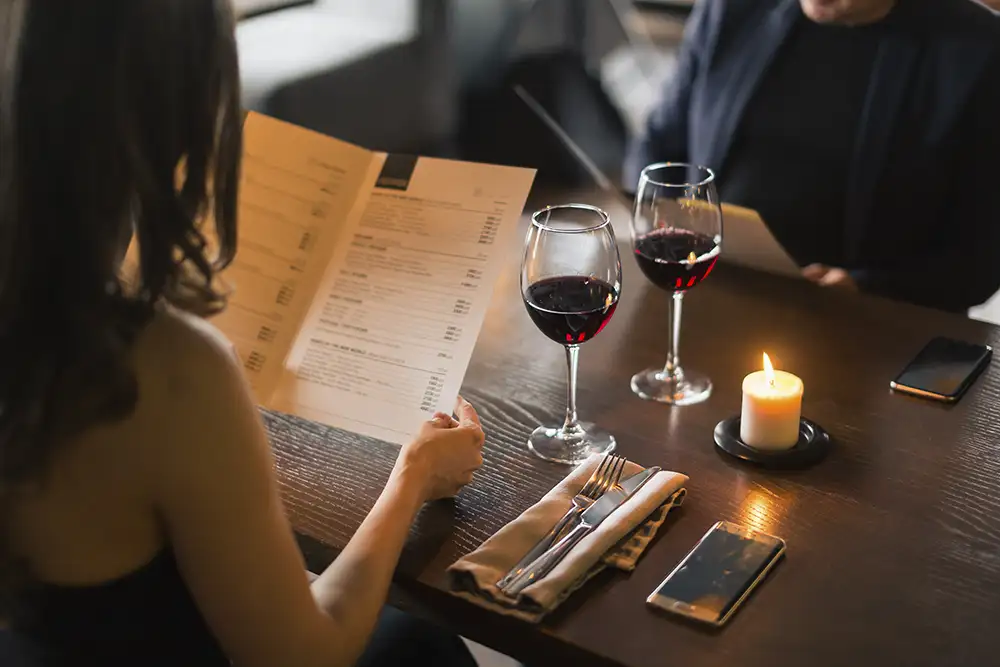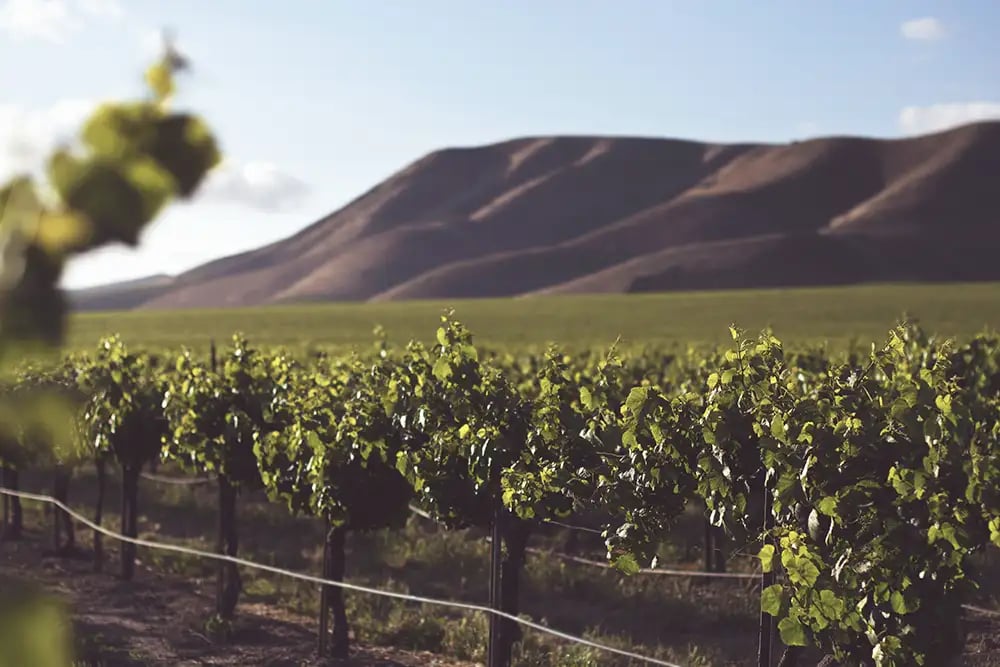How to Create a Wine List for Your Menu

April 2, 2024

Crafting an exceptional wine list for your restaurant menu requires a delicate blend of sophistication, strategic thinking, and storytelling. Whether you're a seasoned sommelier, a skillful bartender, or an accomplished restaurateur eager to elevate your establishment's offerings, this guide will show you how to create a memorable and enticing wine list.
Not merely a logistical task, building a wine list creates an opportunity to curate an experience for your guests.
Each wine variety holds a story, and each sip should be a journey for the palate. In this exploration, we'll jump into understanding wine list basics, categorizing wine, crafting evocative descriptions, implementing strategic pricing, suggesting harmonious food pairings, and setting the visual stage for a delightful dining experience.
Whether you're aiming to refresh an existing wine list or starting from scratch, this guide will equip you with the knowledge and inspiration to create a wine list that complements your establishment's identity and leaves a lasting impression on your patrons.
What We’ll Cover in This Piece:
The Basic Fundamentals of a Wine List

Before embarking on the journey of building a remarkable wine list, you need to grasp the fundamentals. A well-structured list guides patrons through their wine selection and enhances their overall dining experience.
Clear Layout and Format
Start with a clutter-free design for your wine list using logical categorization. Sections like Reds, Whites, and Sparkling make navigation a breeze, enhancing the overall user experience.
Key Information at a Glance
Include essential details for each wine variety: name, type, origin, and price. Optionally, provide additional information such as grape variety, vintage, and alcohol content for enthusiasts seeking a more in-depth understanding.
Untappd for Business is an essential menu-building platform that connects to the world’s largest wine and spirits database, allowing you to rapidly design your menu with rich information to help guide your guests with their selection.
Engaging Descriptions
Add a touch of storytelling by including brief descriptions for each wine.
Tasting notes, flavor profiles, and unique characteristics help customers make informed choices and add a layer of intrigue to the selection process.
Transparent Pricing
Ensure that your wine prices are clear and transparent. Whether listing prices per glass or bottle, align the pricing strategy with your target audience and the overall positioning of your establishment. A well-balanced pricing strategy contributes to a positive customer experience.
Mastering these fundamental elements sets the stage for creating a wine menu that is not only functional but also enhances the overall dining experience for your patrons.
How to Categorize a Wine List
When categorizing the wine varieties on your wine list, thoughtful organization, similar to how your wine storage looks, can help your patrons navigate the diverse world of wines.
Here are some tips to consider:
By Type or Style
Organize your wines based on their type or style.
Common categories include Reds, Whites, and Sparkling. This classic approach lets customers quickly identify and explore wines that match their preferences.
Geographical Regions
Consider categorizing wines by their geographical regions.
Whether showcasing the rich flavors of Napa Valley or the elegance of French Bordeaux, this approach adds a cultural dimension to your wine menu, providing a global journey for the taste buds.
Grape Varieties
Highlight the diversity of grape varieties by creating categories based on specific grapes.
From robust Cabernet Sauvignons to crisp Sauvignon Blancs, this approach allows connoisseurs to explore different expressions of their favorite grape.
Wine Intensity
Consider categorizing wines based on intensity, ranging from light to full-bodied.
This approach assists patrons in finding wines that suit the mood, the occasion, or the accompanying dish, providing a nuanced and personalized experience.
When optimizing your wine list, keep in mind that a combination of these categorization methods can work synergistically, providing a well-rounded selection that caters to various preferences. Striking the right balance ensures that your wine menu becomes an enticing roadmap for an unforgettable journey.
How to Write Wine Descriptions for a Wine List

Transforming your wine menu into a captivating narrative involves more than just listing names and prices.
Crafting compelling wine descriptions is an art that entices patrons, stimulates their curiosity, and enriches their overall dining experience. Here are some best practices to consider when describing wines on your menu:
Invoke the Senses
Engage your patrons' senses by vividly describing the wine's aromas, flavors, and textures. Use evocative language that transports them to the vineyards, allowing for a sensory connection with the wine. Consider using words like “toasted”, “oaky”, and “tropical” as words to set the scene.
Highlight Origin and Terroir
Share the story of the wine's origin and terroir, which is the unique taste and aroma that a wine acquires from its specific surroundings. Did that Cabernet come from a cool mom-and-pop spot in Napa Valley? How about a historic one-hundred-year-old vineyard in the Rhône Valley? Are the citrusy fruits from a tropical paradise?
Describe the unique characteristics imparted by the specific region, soil, and climate, creating a sense of place and authenticity for the discerning connoisseur.
Tell a Story
Go beyond tasting notes and tell a story about each wine.
Share the winemaker's passion, the vineyard's history, or the grape's journey from vine to bottle to your customer’s glass. Connecting emotionally with the wine enhances the overall experience for your patrons.
Provide Food Pairing Suggestions
Suggesting food pairings adds practical value to your descriptions.
Guide patrons on which dishes will complement the wine, encouraging them to explore new flavor combinations.
As you refine your wine menu, remember that each description is an opportunity to create intrigue and anticipation.
Striking a balance between informative and poetic language ensures that your wine descriptions inform and inspire, making the wine selection process a delightful adventure.
The Basics for Adding Price on a Wine List

Pricing your wine menu is a delicate balance that influences not only your revenue but also the perception of value among your patrons. Here, we dive into the basics of wine pricing to help you navigate this crucial aspect of crafting a successful wine list:
Know Your Audience
Understanding your target audience is the first step in establishing a pricing strategy. Consider the demographics of your clientele, their preferences, and their willingness to spend. Aligning your prices with your audience's expectations ensures both satisfaction and profitability.
Consider Overhead Costs
Factor in your overhead costs when determining wine prices. This includes the cost of purchasing the wine, storage, staff training, and any additional expenses associated with maintaining a diverse and well-curated wine selection.
Markup Percentages
Choose an appropriate markup percentage for your wines. While industry standards often range from twenty percent to fifty percent, the specific percentage may vary based on your establishment's positioning, target market, and the perceived value of your wine offerings.
Offer Variety in Price Points
Provide a range of price points on your wine menu. Offering both affordable and premium wine variety options that cater to a broader spectrum of patrons, enhancing inclusivity and encouraging diverse wine exploration.
As you finesse the pricing strategy for your wine menu, remember that transparency and perceived value are key.
Communicate the quality and uniqueness of your wine selection through well-considered pricing, ensuring that each bottle on your menu contributes not just to your bottom line but to the overall satisfaction of your patrons.
Tips for Creating a Visually Appealing Wine List

In general, designing any type of restaurant menu is an art form. Creating a visually appealing wine list is not just about aesthetics; it's a strategic tool that can significantly impact how patrons perceive your wine offerings.
Here are some essential tips and best practices:
And if you’re looking for some inspiration: Check out “The Top 8 Digital Menu Designs on Untappd for Business.”
High-Quality Imagery
Invest in or source high-quality images of your wine bottles. Sharp, well-lit photos not only showcase the visual appeal of each wine but also convey a sense of quality and professionalism.
Consistent Design Aesthetics
Maintain a consistent design theme throughout your wine list. Cohesive fonts, color schemes, and layouts contribute to a polished and sophisticated look that aligns with the ambiance of your establishment.
Clear and Readable Fonts
Ensure that your wine list is easily readable. Choose clear and legible fonts, considering factors such as size and style. A well-organized layout with appropriately spaced text enhances the overall user experience.
Organized Layout
Organize your wine list logically and intuitively. Whether grouping by type, region or any other categorization, a well-structured layout makes it easy for patrons to navigate and find the perfect bottle.
Strategic Use of White Space
Embrace the power of white space. Thoughtful spacing between sections and items on the menu prevents visual clutter, allowing each wine to stand out and be appreciated individually.
Icons or Symbols for Quick Reference
Consider incorporating icons or symbols to denote key information at a glance. Whether indicating wine types, flavor profiles, or special designations, visual cues enhance comprehension and streamline the decision-making process for patrons.
Remember, your wine list is a visual representation of your establishment's commitment to excellence. Building a wine menu shouldn’t be a difficult task. Consider a solution like Untappd for Business to help you craft the perfect menu, including wine for your business.
A Final Word on Writing a Wine List
Listing wines on a menu is an art that combines creativity and strategic thinking.
By understanding the basics, categorizing effectively, crafting compelling descriptions, implementing strategic pricing, suggesting food pairings, and prioritizing visual presentation, you can create a wine list that will catch your customers’ eyes, engender intrigue, and ultimately, satisfy their tastebuds.
Note: This article was generated with the help of ChatGPT. It was edited, enhanced, and published by humans.
Build Your Best Wine List With Untappd for Business
Untappd for Business is powering nearly 20,000 restaurants, bars, breweries, and other businesses across 75 countries.
With an intuitive menu designer, Untappd for Business enables you to create and publish your ideal menu to digital signage, beautiful print templates, and more.
